It’s 2023 and Email marketing continues to stay on top of the list of lead-generating strategies despite the fulminate rise of social media platforms. It remains effective and cost-efficient. And for these reasons, great email marketing tools keep coming up or reinventing themselves. And thus, comparisons such as the one between MailerLite vs MailChimp vs ConvertKit seem inevitable in a bid to get yourself the platform that best suits your business needs.
Disclosure: This article may contain sponsored or affiliate links. If you decide to make a purchase using one of these links, I’ll make a small commission without impacting the price that you will pay. I recommend just services or products I find useful and that I have tested or currently use.
There are plenty of other email marketing platforms besides MailerLite, MailChimp, and ConvertKit. However, finding a perfect fit for your business involves evaluating various solutions and this process can either be a harrowing experience or a complete delight.
So, to make it easier for you, this article lists a broad comparison between these 3 main platforms MailerLite vs. MailChimp vs. ConvertKit. This is a comprehensive comparison that aims to help you make an informed decision.
1. Customer Satisfaction Thanks to a 24/7 Customer Support
MailerLite wins on this very important feature because they have very responsive and efficient round-the-clock customer support even on the free plan. It gets even better, when you miss their chat response they send it straight to your email, this helps you find solutions to any questions fast enough rather than waste time on Google searches or troubleshooting. Particularly when you are a beginner using this type of platform.
ConvertKit too has 24/7 customer support that responds to your questions in real time. On top of this, they’re also great at community-based support.
MailChimp has customer support available only to their paying subscribers. But even then, you have to mine through a myriad of answers and this can take time and crush your patience.
A recent survey on email marketing software ranked MailerLite at the top (97%) and ConvertKit followed right next (96%) while MailChimp (93%) ranked fifth in customer satisfaction.
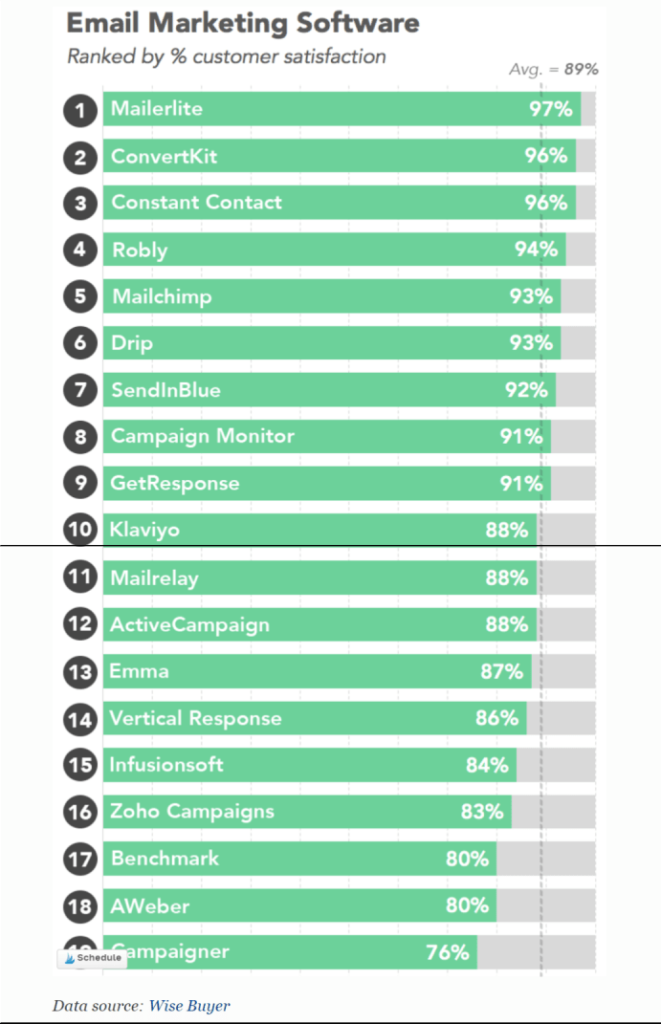
Source: Forbes
2. Landing Page
MailerLite landing page wins again here. Even on the free plan, they provide you with customizable independent landing page features that allow you to edit it according to your specific requirements. What this means is that you don’t have to run parallel accounts to capture emails or create landing pages or web forms. And they are good-looking too!
ConvertKit and MailChimp on the other hand integrate their landing pages with Instapage on plans that start at $29 per month. They are mainly not as customizable as MailerLite.
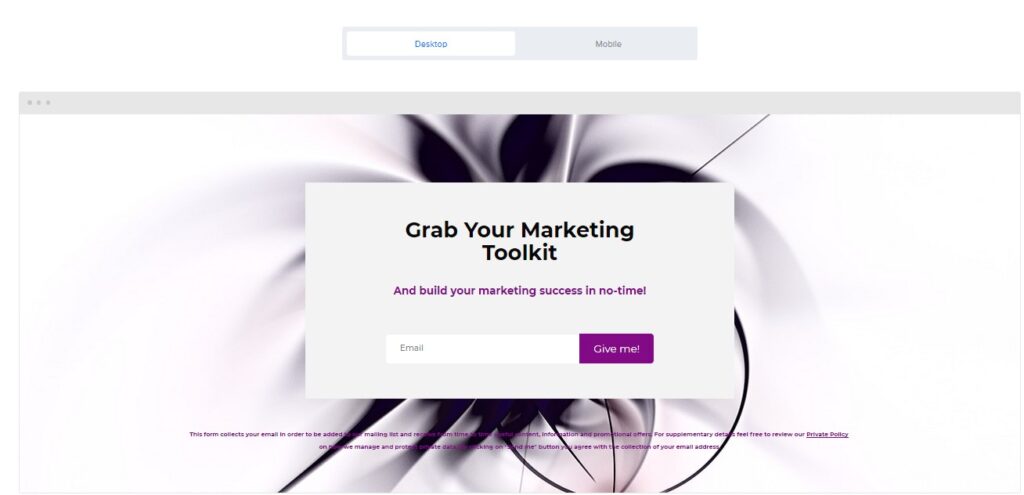
3. MailerLite vs MailChimp vs ConvertKit: Pricing
MailerLite allows you only 1K free subscribers and after you surpass this you start to pay. That said though, it’s still cheaper compared to MailChimp because even after going beyond the 1K threshold you get unlimited emails with access to all features and it gets even cheaper as your subscribers increase.
MailChimp allows you to have up to 2K subscribers absolutely free with a maximum of 12K emails per month. However, once you surpass the limit the payment is quite high compared to MailerLite pricing.
ConvertKit has no free plan and their cheapest package starts at $29.
4. MailerLite vs MailChimp vs ConvertKit: Marketing Automation
MailerLite offers you an opportunity to create workflows that are guided by your campaign’s target for instance clicks or opens or segmentation. You don’t need the technical know-how or a “how to use MailerLite” manual, as the platform is highly intuitive. The tagging and segmentation allow you to create tailored campaigns for your specific target group. They offer this feature even on the free plan.
MailChimp also offers automation including follow-up emails. It, however, offers no workflow, therefore doesn’t give you a smooth ride and from my point of view complicates your efforts to find alternative solutions.
The ConvertKit also doesn’t offer workflows, but recently they added a visual automatic builder that is way easier and faster to use compared to any feature on either MailerLite or MailChimp.
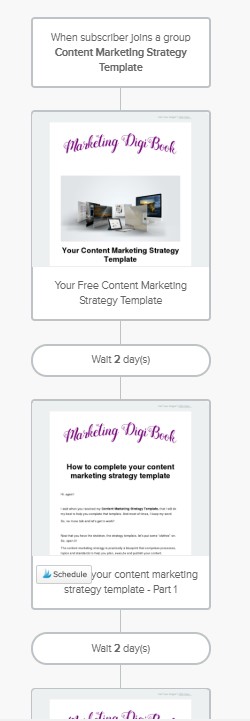
5. Template and Welcome Mail
MailerLite offers you an array of templates and welcome emails to work with, all free even in the forever free plan. And they are very user-friendly, so you do not need any guidance or some sort of MailerLite tutorial.
MailChimp on the other hand offers some features under the paid plan, including welcome mail.
ConvertKit fails in this aspect because they don’t give you much to work with and this doesn’t help you get a direction in terms of your email design or customization.
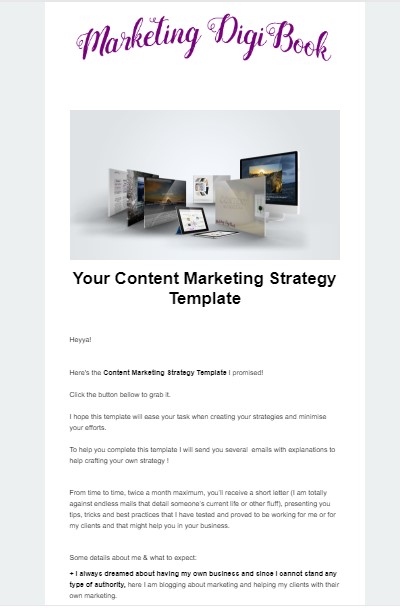
6. MailerLite vs MailChimp vs ConvertKit: A/B Testing
If you’re running a large email campaign and you depend on split testing to determine the results of your efforts. Both MailerLite and MailChimp offer you testing options. MailChimp offers up to three variables while MailerLite allows for both A and B choices.
ConvertKit lately offers testing for email content or to find out what makes your subscribers click.
7. File Organization/Manager
Both MailerLite and MailChimp have this great tool to help you organize your content into folders or files. MailerLite has a file manager while MailChimp has a content manager. These features are very handy especially if you handle huge content e.g. images.
The better of the two, however, is MailerLite because they have made it easier to create groups or segments. MailChimp is not very organized and thus leaves you with quite some work and ends up consuming your time because it’s not user-friendly.
8. MailerLite vs MailChimp vs ConvertKit: Customization
By personalizing your campaign and making it less promotional, you’re guaranteed to gain more interest and clicks. This is what MailerLite has over MailChimp. It allows you to redesign your emails to a more personalized tone, you can customize:
- The colors, layouts, and even landing pages.
- Customizable themed templates
- Customizable unsubscribe pages (it’s ok to make a great last impression, might change someone’s opinion)
- Customizable buttons that you can directly add to your email
- And much more.
MailChimp does not allow for any redesigning. It’s rigid on inserting your purpose at the top and your address at the bottom. There’s no readjusting the widgets and this eventually has an effect on how your email will be received. Not to mention that the layouts are far from being pleasant to the eye and it’s among the first reasons that made me renounce Mailchimp the next day I started to use it.
ConvertKit also is limited in customization options.
9. Integration
Integrating with various third-party apps can truly be helpful on so many levels thus simplifying your workflow and increasing efficiency.
MailChimp integrates with many sites including PayPal and Shopify. Why this is great teamwork? Because with every new purchase on your site, the new customer email is automatically added to your list and you’re also able to track the links and find out how much revenue your email has made (well caution to GDPR for European customers if you use it that way). It is also integrated with WordPress, Facebook, Hootsuite, Eventbrite, Google Analytics, and many more.
MailerLite API isn’t too bad though there’s plenty of room for improvement; it integrates with Bookfunnel which is especially great if you’re dealing with eBooks. It also integrates with Shopify and MailerLite WordPress plugins, Facebook, and several others. And as with MailChimp, new purchases mean new contact added to your list automatically.
ConvertKit has the least integrations except that it’s supported by Zapier, which gives it great potential for more integrations.
10. Reporting
All three ESPs have, of course, some form of reporting. The difference is in how detailed you want your report to be. If you’re just interested in a quick view of your email list growth, ConvertKit does that brilliantly. But that’s all you’re going to get.
MailerLite and MailChimp are more detailed and will allow you to track everything including unsubscribes, link activity, open rates, clicks, bounces, and even location.
The big difference that makes MailerLite win is that you can map out your data and get a visual report.
[interact id=”5b8ed2e728483b00147dabf7″ type=”quiz” mobile=”false”]
11. Superior Open Rates
Imagine spending all your efforts and skills getting new subscribers and creating winning email campaigns only for them to land in the spam/ promotional folder! Then eventually your subscribers will not hear from you and gradually forget about you. This is what’s likely to happen to you when you use MailChimp.
With MailerLite your emails land straight in the primary box, most of the time, and this is why they have higher open rates. It’s important to note here that MailerLite GDPR compliance means there’s the transparency of consent by new subscribers. And this is a good thing for your campaign because you rest assured you are reaching the right audience (you’re not a spammer) and do not need on your list persons that are not interested in your products or services.
ConvertKit also has a higher open rate compared to MailChimp.
12. Auto-resend
All three ESPs allow for auto resend of follow-up messages to subscribers that didn’t open the email or never clicked the links.
The difference is that MailerLite allows you to do more than just resend, it allows you to make any of the following edits:
- Change your email subject
- You can also add a new or different message above the body of the original email to give it a more personal touch
- You can change both the content and subject of the content and resend
Of course, these changes may just be what’s needed to get more clicks.
13. MailerLite vs MailChimp vs ConvertKit: Drag and Drop
As social media seems to have a great impact on marketing trends, it’s obvious that today people are more visual than ever. Therefore text only campaigns are not enough and so, you need to include some visual elements in your emails to be able to capture the customer’s attention and consequentially be able to communicate your ideas better.
In this area, all three platforms have this amazing drag-and-drop feature. But again, as seems to be the trend now, MailerLite is better than MailChimp and ConvertKit, at least in my view.
Their drag-and-drop builder makes it so easy even for beginners to design great emails like pros. You’re able to choose from an array of newsletter templates that you can edit or tweak to suit your needs. And you can also use these same templates to create your bespoke design without having to start from scratch.
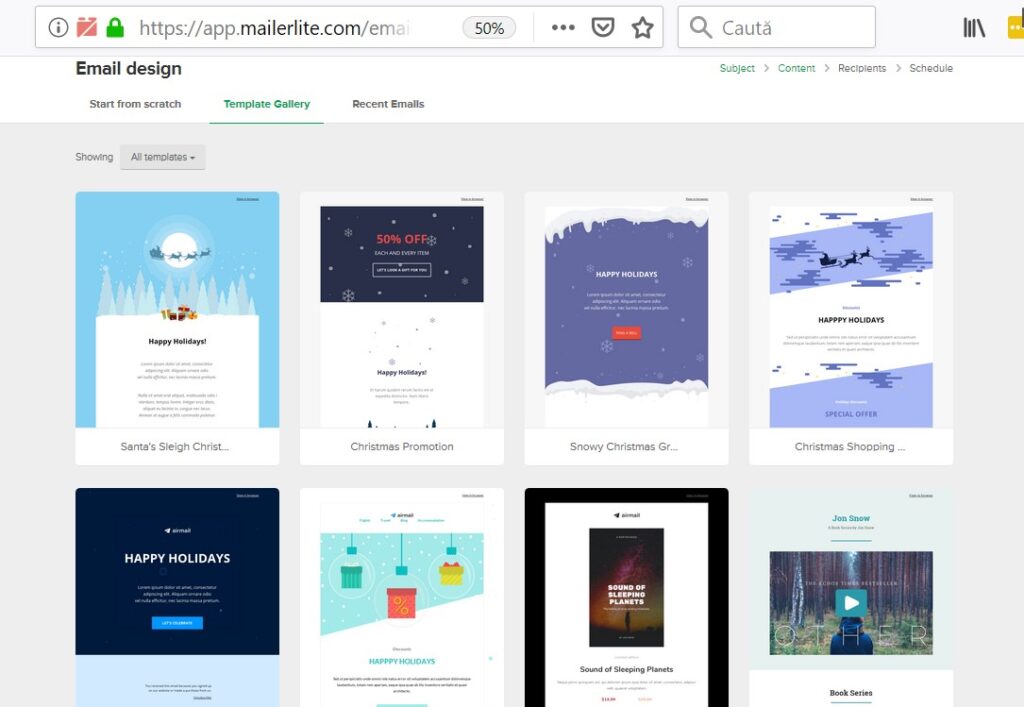
14. Tagging and Segmentation
One simple strategy to use to get more clicks is to segment and tag your subscribers to create a campaign that’s very specific and relevant to them. All three platforms have these features. ConvertKit seems more inclined to bloggers and so they have a ConvertKit WordPress Plug-in that tracks visitors on your website and tags them.
MailerLite and MailChimp also have this segmentation and you can segment by:
- Sign-up source
- Geographical data
- Customer journey
- Email engagement
- Purchase activity and many more
On both platforms, you can also combine the segments to target a specific audience and build strong relationships bespoke for them. MailerLite uses the Subscriber management tool. So, basically, the 2 ESPs seem to level it out here.
15. Mobile Friendly
Over 55% of emails are opened on phones and tablets. It’s therefore important that your emails appeal on any device. MailerLite automatically fits your newsletters into any size to make sure the layout remains unbroken. With MailChimp you may have to do some additional coding work by yourself to edit the mobile templates.
ConvertKit doesn’t have a mobile app.
16. MailerLite vs MailChimp vs ConvertKit – Unlimited Image Hosting, Absolutely Free!
There’s no limit to the number of images (or amount of data) that you can store on MailerLite, and it’s all free.
MailChimp also offers unlimited storage on both data and images; the only difference is that the images must be below 10MB in size, each.
ConvertKit, on the other hand, is also unlimited but has no specific media database to manage your uploaded files. This can be quite a headache.
17. Other Features
MailerLite has the following features that the other two don’t have;
- Unsubscribe page builder
- RSS to Email
- Available in 8 languages (5 Support languages)
Common misses
They all lack spam and design testing features.
They all don’t have a backlist.
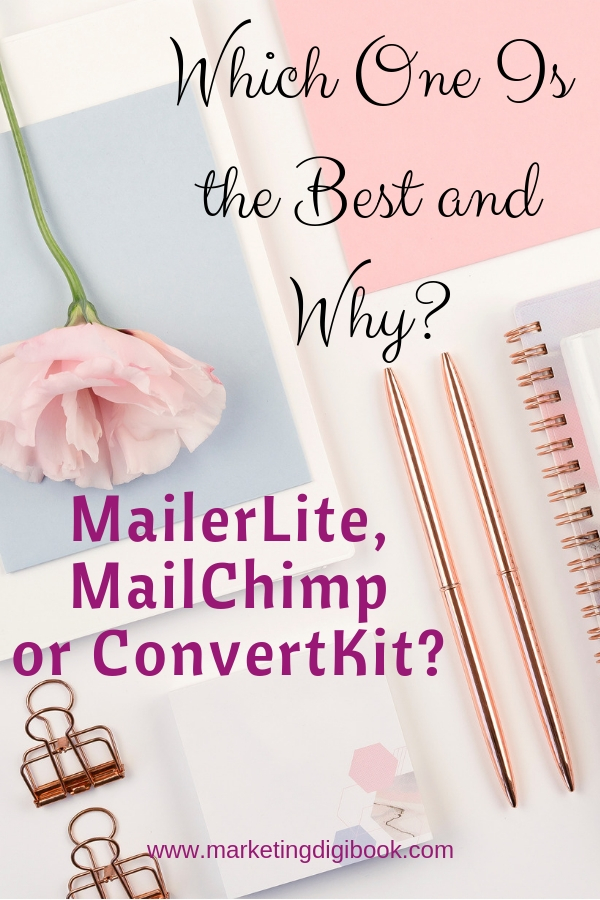
Final Tips
MailerLite
When it comes to customer experience and satisfaction, MailerLite really takes the cup home because it’s equipped with features and tools that most small businesses will require.
It’s a perfect platform for you if:
- You’re a newbie who requires a simple interface with a user-friendly email editor.
- You’re a freelancer, small startup, or solopreneur working on a budget. But still in need of elaborate quality automation tools that can still run sophisticated campaigns.
- You’re a creative or a blogger; you’re spoilt for choice with tailor-made features to help with your campaign that includes WordPress integration.
- You’re just in need of an all-inclusive email marketing platform that has great features even on the free plan.
- Or you simply need a platform that offers your language.
MailChimp
This old platform is great if budget is your major problem. It offers powerful tools with useful integrations such as WordPress, Shopify, and Zapier.
MailChimp is not recommended for you:
- If you’re looking for automation that is user-friendly and easy to manage. They lack a workflow editor, and MailerLite automation might be better for you.
- If you’re an affiliate marketer, MailChimp also works with a super strict policy on affiliate marketing; you may want to avoid such a rigid working environment.
ConvertKit
Some strong key areas of this platform might include the ability of the landing page to collect subscribers including those without websites. This is a plus for social media campaigns.
ConvertKit may be best for you if you need very specifically targeted campaigns. This is because of their tagging and segmentation system that helps you identify a specific group that you want to target.
It’s not recommended for you if you have a low budget. If you compare the features they offer you and the price with other platforms like MailerLite, you will realize they’re quite expensive.
It’s also not very recommended if you are a newbie and have no knowledge of HTML. Again, MailerLite offers you more variety and is user-friendly even for beginners. It’s better for persons knowing to code.
Overall, even on MailerLite free, you clearly get offered premium features at no cost or at a very affordable cost, depending on the number of your subscribers. Obviously, any MailerLite review sums it all up to that fact. They’re also constantly upgrading to meet their clients’ needs. These are the reasons why everyone is migrating to find their best option.



